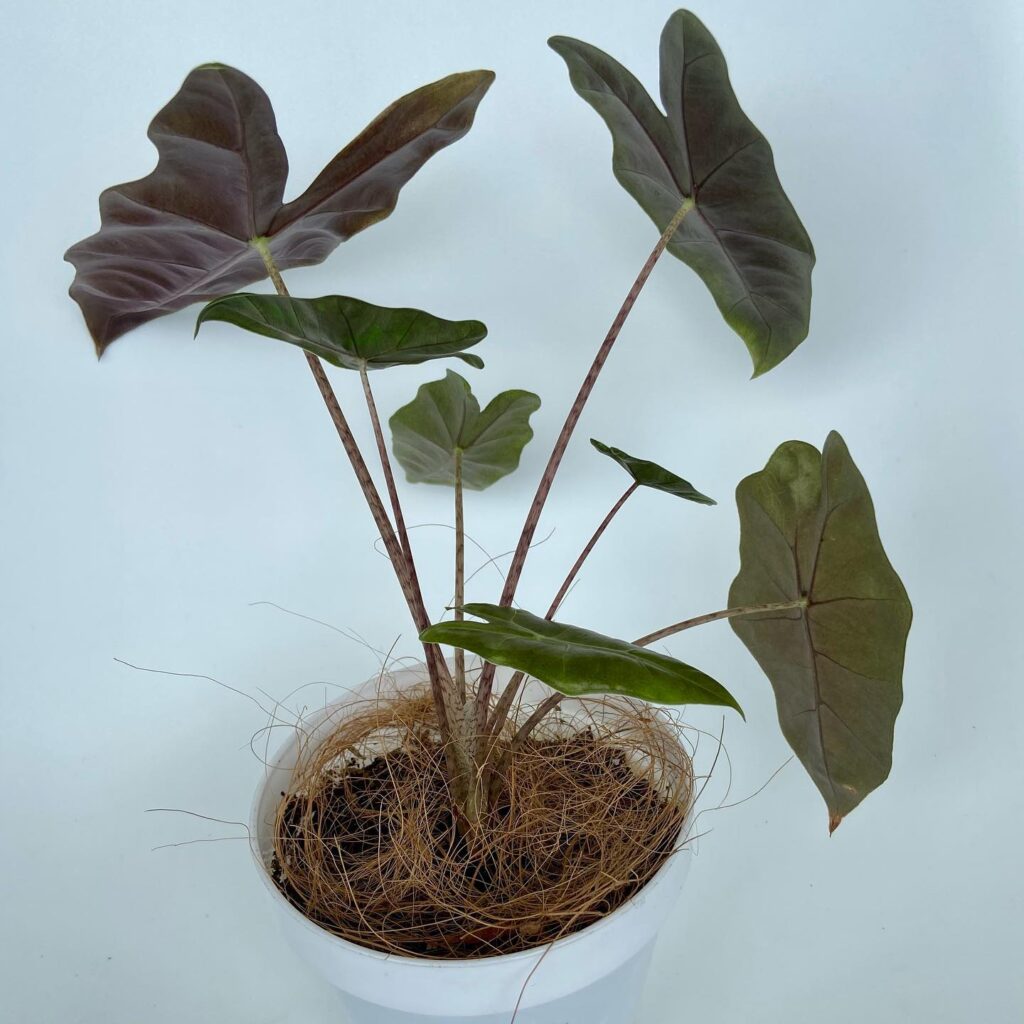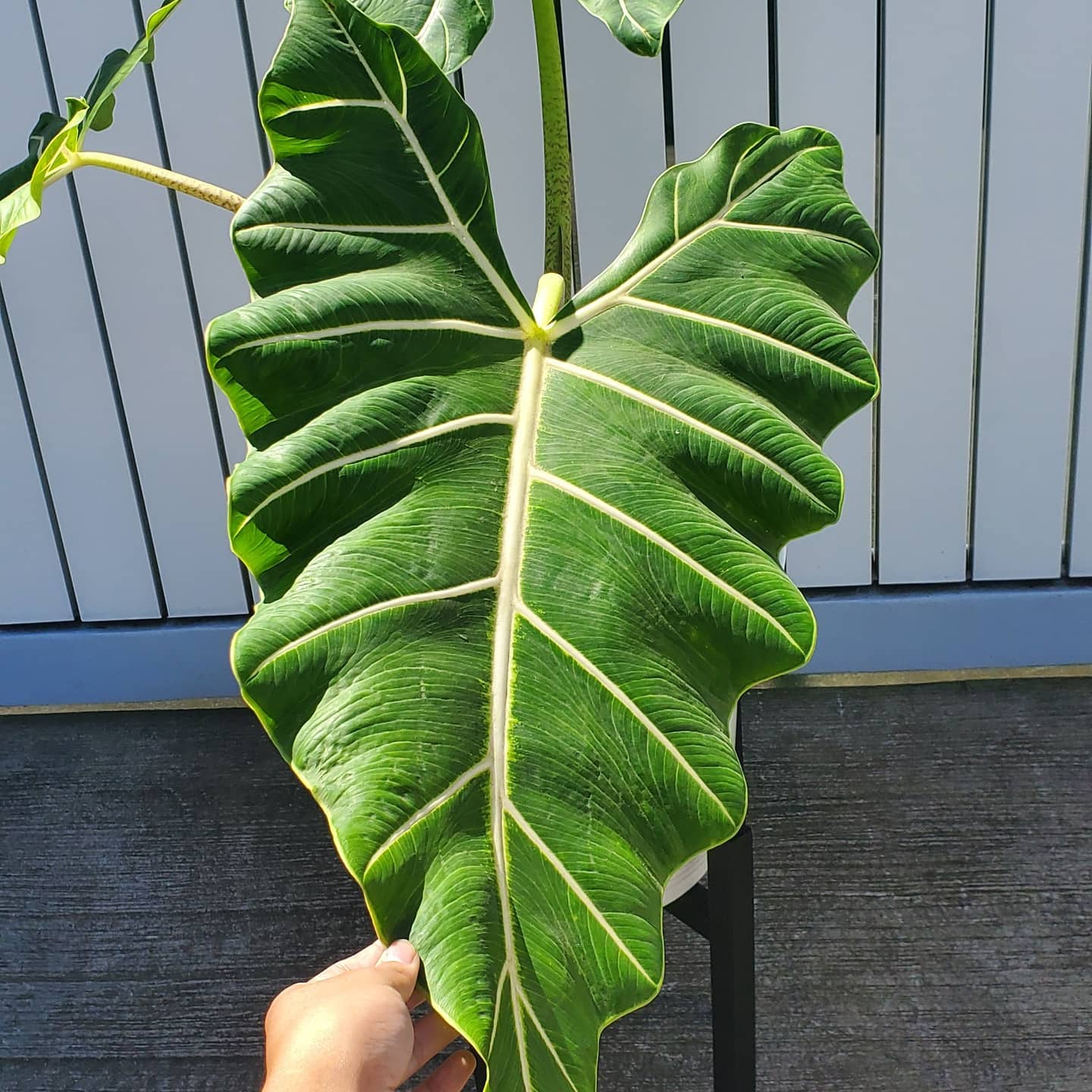Basic Information
Discover Alocasia Pseudo Sanderiana – a rare and exotic plant that brings the tropics to your home. Explore essential care tips, from lighting to watering. Nurture this stunning species and turn your space into a green oasis.



Light
Alocasia Pseudo Sanderiana is a plant that requires bright but indirect light to thrive. Direct sunlight can damage its delicate leaves, so it’s best placed near a window with filtered sunlight. The perfect location would be near east or west-facing windows, where it receives gentle morning or evening sun. If the light is too direct or intense, the plant’s leaves may lose their vibrant green color, become pale, or develop burn spots.
Water
This plant prefers consistently moist soil, but it’s crucial to avoid waterlogging. You should water the plant once the top 1-2 inches of soil feels dry. In most home environments, this might mean watering approximately once a week, but this can vary with the seasons and your indoor climate. The goal is to strike a balance between keeping the soil moist and preventing excess water that could lead to root rot.
Soil
The Alocasia Pseudo Sanderiana needs well-draining soil that can hold some moisture without becoming soggy. A mix containing potting soil, cocopeat, organic manure or vermicompost, charcoal chips, and perlite is ideal. This blend ensures good aeration and drainage while providing essential nutrients. The charcoal chips help to absorb impurities and excess moisture, reducing the risk of root diseases.
Temperature
This variant of Alocasia thrives in warmer temperatures, which are typical of its tropical origin. To keep this plant healthy, it should be placed in a space where temperatures remain above 60°F (15°C) at all times. Sudden changes in temperature or exposure to cold drafts can cause stress to the plant, leading to leaf drop or stunted growth.
Humidity
High humidity is crucial for Alocasia Pseudo Sanderiana. In a typical home environment, you may need to artificially increase humidity levels. This can be done by placing the plant on a pebble tray with water, using a humidifier, or regular misting. The plant’s leaves may develop dry, brown edges if the air is too dry.
Fertilizer
Although there are no specific guidelines for fertilizing Alocasia Pseudo Sanderiana, it is generally recommended to use a balanced, liquid fertilizer during the growing season, which is usually spring and summer. The fertilizer should be diluted to half-strength before application. On the other hand, it is advisable to reduce or stop fertilization during the dormant winter months.
Growth Rate
Alocasia Pseudo Sanderiana is known for its slender, elongated leaves and can grow quite tall under optimal conditions. Its growth rate is typically fast in the right environment, especially during the warmer months.
Tip: For newly propagated plants, coconut fiber is the most effective choice.
Pet Safety
This plant is toxic to pets and humans if ingested, due to the presence of calcium oxalate crystals. It should be kept out of reach of pets and small children to prevent accidental ingestion.
Grow in Semi-Hydro
- Alocasia plants excel in Semi-hydroponics (LECA/Pon) due to their natural inclination for root growth and humidity.
- Successfully transitioning Alocasia to Semi-hydroponics is enhanced with a Nutrient Stagnant Wicking (NSW) setup.
- Alocasia roots adapt seamlessly to the water in LECA/Pon, with quick resolution of any root hair issues in NSW setups.
- Fertilizer includes a nutrient mix concentration of approximately 800-1000ppm.
- These plants are versatile in different temperature and humidity settings, thriving in controlled environments.
- Long-term care involves maintaining a constant water reservoir and performing occasional system flushes for sustained growth.
Tips
- Avoid placing the plant in drafty areas or near air conditioning vents.
- Rotate the plant occasionally to ensure even growth on all sides.
- Inspect regularly for signs of pests like spider mites or mealybugs.
- Repot only when necessary, typically when the plant becomes root-bound.
- Use tepid water for watering to prevent shocking the plant’s roots.
- Prune any yellow or damaged leaves to keep the plant healthy and encourage new growth.
Remember, caring for Alocasia Pseudo Sanderiana is rewarding. Keep these tips in mind to watch it thrive and add color to your indoor garden.
Happy planting! 🌱


